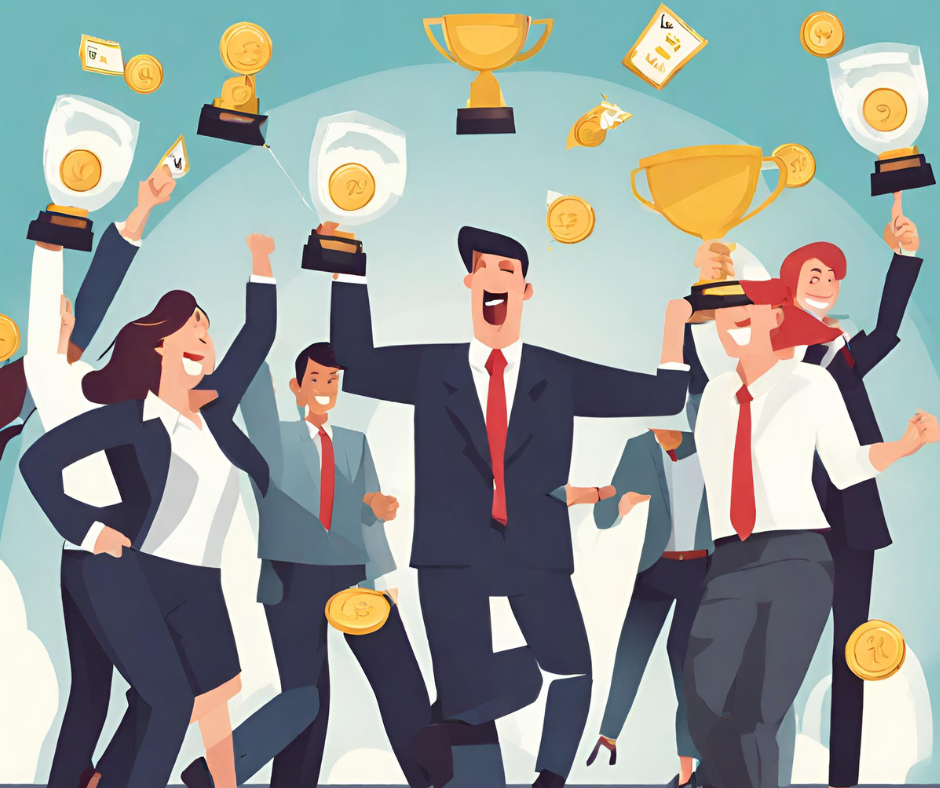The Essential Characteristics for Achieving Business Goals

As a business leader, you must know when to hold, fold, pivot, or stick it out. Setting business goals is part of forecasting, educated guessing, elevating, and adapting. Believe it or not, most do not establish new business goals for the team to rally behind. It's astonishing!Goals require implementation, team engagement, and achievement of results. I have outlined a few characteristics all individuals and teams must understand about themselves to achieve their goals.
I have partnered with AQai to provide a detailed understanding of these essential characteristics that all must know personally, professionally, and organizationally to achieve their goals.
JRCI, combined with AQai documentation, provides excellent feedback reports and a breakdown of primary and secondary sub-dimensions to frame our thoughts and drive action to achieve goals. Clearly understanding these applicable definitions allows any leader to thrive while implementing coach-recommended interventions and action plans for success.
Understanding how you rank with others supports your personal as well as team ability to achieve goals from a science-backed perspective. Working with JRCI in this capacity will elevate your ability to achieve your goals. Please look at the dimensions we will measure and provide recommendations, as they are precious for any business leader!
What are the Dimensions I must know about for my success?
ABILITY
Grit: ability to pursue a long-term goal despite obstacles. Staying the course. Passion and Perseverance. It is essential to adapt successfully, especially in changing times. Self-regulation and self-efficacy. A better predictor of academic achievement than IQ. They work their way through the challenges. This can result in Blindspots as they endure difficulties.
Mental Flexibility: the ability to hold contradictory ideas in your mind. To learn and adapt. Organizational flexibility. Exploration and Exploitation. Open Mindedness. Being aware of our own biases. Can you see alternative points of view? Are you able to be in love with the problem and open to alternative types of solutions versus being in love with the solution? There can be multiple objectives: low, medium, and high.
AQ Mindset: self-beliefs. Creates a reality, an environment people and teams can rally around, resulting in positive outcomes—the shape of past events with new data. People move toward their goals and adapt successfully. Ensure that the information we feed our brains is positive. Deal with different situations. Optimistic about the future. They will thrive through change, even if it is challenging. Naturally, see the positive things while they move toward their goals. Believe in themselves. Certain about how to cope well and adapt to new situations.
Resilience: recovering from setbacks. The bounce back. Unpredictable situations and recovering from change. Rapid bounce back to a better situation. Stimulated by change and flexible as it comes to change.
Unlearn: the ability to let go of old skills and learn new ones. Break old habits with relative ease. Past success does not guarantee future success. Rethink the status quo, readdress skills, and old ways of doing things. Open-mindedness to do new ways of doing things. Required skill for adaptability.
The cycle of unlearning is a system: habitual, relearning for the future. Break through change. People stop doing specific actions before doing new things—a valuable key to overcoming some of the restrictions and barriers that are holding us back from rapid adoption.
CHARACTER
Character (Who Adapts and Why), as a master dimension, describes the adaptability elements that are more traditionally thought of as innate or stable aspects of Self. The areas within character do tend to be more stable over time. Still, it is very important that you do not believe these are fixed and therefore become developable and changeable. This is with intent and often when orientated to a future, compelling goal.
"Past success does not guarantee future success."
- Jeff Rogers, CPMBC
Emotional Range. This is tied to the Big five personality traits: Neuroticism and emotional range. How much a person worries about negative events. How we perceive negative and positive outcomes. Fear of negative outcomes. This is linked to change and uncertainty, how we react to emotional stimuli. Feel calm when the future is unpredictable. They may be insensitive to changes. Those who are strongly affected by the change can be fearful of the future.
Thinking Style. Related to how we make sense of the world. How we view, think, and process what happens to us in the world. People go through their careers and become ambidextrous in the way they think. They may be more capable in their thinking. Teams navigate their way through the challenges they face. It can change the situation and circumstance. Under high pressure and stress, our deepest values show up. When required to react rapidly, we may shift our thinking style. Do you focus on the big picture or the details when change happens?
Extraversion. A measure of our enthusiasm and energy. When we are in a highly excited mood, we tend to take more risk versus security. Outgoing and social. How much the person seeks the company of others. They love social interaction and are energized versus being drained. Introverts enjoy time alone and don't want to be the center of attention. They like being alone. High on extraversion, seeking the company of others, and like receiving attention in groups. I like social events and get cabin fever easily. You may need people around you to get energy. Working remotely in this hybrid environment may be energizing to some but destructive to others.
Hope. A healthy sense of hope is very important to adaptation. It is a character dimension and the general ability to see different ways to achieve goals.
For Hope, one requires a need for a vision or a goal, a pathway strategy to achieve the goal. Do we have the ability to carry out the strategy and follow the pathway to get to the results? Sliding scale from fearful to hopeful. People with high hope think they can achieve their goals and think of ways to achieve them. This is linked to Mental Flexibility. They have the ability and skills to get there. While low hopers, may have trouble pushing through roadblocks to overcome the pathway to change.
Motivation Style. Those who play to protect and those who play to win. It is one of the key reasons why we strive for our goals. It is important to know why and how they adapt to change. This varies from person to person and situation. Resulting in intrinsic enjoyment or fulfillment. Extrinsic is to get something. Intrinsic is more critical to change.
It is the way to get to the end. Don't confuse this with what your motivation is. It is the style that causes you to make the change and why someone adapts to change. I am motivated by a burning platform (defense) or playing to win (offense). Zoom is a response to a burning platform. Play to win, and maximize gain. Positive outcomes and taking risk. Motivated by inspirational stories of successful people. Play to protect to take steps to achieve the outcome, organized and cautiously. Share horror stories and tend to avoid negative outcomes.
ENVIRONMENT
Environment (When and to what degree does someone adapt), are the external components. Your environment can either help or inhibit your adaptability. This is often missed, rarely measured, and a supremely critical third dimension of one's AQ. Without this understanding, we are operating in the dark and reducing the effectiveness of any data and insights gained.
Company Support is about your perceptions of your organization. Does it care about your well-being, better outcomes, and retention? While 'low company support' assumes the company doesn’t have concerns about employees or help them in time of need, high support companies value them and their goals. Employees even tend to adapt better. This affects loyalty, engagement, and commitment.
Emotional Health refers specifically to the degree to which people thrive at work by focusing on positive outcomes, not negative ones. This is good for adaptability. Those who feel negative emotions feel fearful and depressed. They tend to give up without internal positive approaches. Those who have high emotional health tend to thrive at work.
Team Support allows individuals to share new knowledge, feel supported, and can express their opinions. Collective and emotional readiness of a group to be themselves, which shows strong Team support, decreases stress by 28%—trust connection and support within the team. Psychological safety is vital to success.
Team members can express themselves openly—the Opposite of failing to speak up and point out challenges. If you change their environment, it can change the outcome. This needs to be revisited each time a person changes teams. At a high level, people can share their thoughts with no fear of repression and tend to operate better since they are in a safe place. People who have support, share their concerns without fear of judgment or criticism.
"Collective and emotional readiness of a group to be themselves, which shows strong Team support, decreases stress by 28%."
-Jeff Rogers, CPMBC
Work Environment Not the physical work environment but those systems and methodologies. Disruption and experimentation. It is where experimentation is encouraged. Failure is encouraged.
Closed, pragmatic environment: they feel afraid and don't share ideas across the organization. They feel they should keep past failures away from the team; therefore, people are unwilling to share their failures—causing more workplace stress. An acceptable work environment allows people to grow, and it will accelerate change and adaptability. Systems are in place to encourage new ideas.
Work Stress is the sense of task overload within the organization. The absence of work stress can give a feeling of acceptance of the status quo. Thus, some stress is necessary. Though, unsupported high levels of work stress tend to lead to burnout and a lack of productivity. The U shape of stress can show how productivity is best when one is in the middle of the stress curve.
Why it Matters
Understanding these sub-dimensions that drive adaptability and our approach and function to change, provides leadership value to any organization. You must clearly understand these sub-dimensions to hit your goals. Let the science inform you to make better decisions and improve implementation and engagement. Refer to this asset regularly as you lead change in your world!



